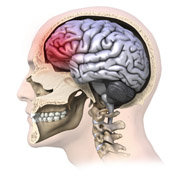Research and Innovation, UNL Office of

Center for Brain, Biology, and Behavior: Faculty Publications
Document Type
Article
Date of this Version
7-3-2015
Citation
2015 The Authors. Published by Elsevier Inc. This is an open access article under the CC BY-NC-ND license
Abstract
The Reading Acceleration Program, a computerized reading-training program, increases activation in neural circuits related to reading.We examined the effect of the training on the functional connectivity between independent components related to visual processing, executive functions, attention, memory, and language during rest after the training. Children 8–12 years old with reading difficulties and typical readers participated in the study. Behavioral testing and functional magnetic resonance imaging were performed before and after the training. Imaging data were analyzed using an independent component analysis approach. After training, both reading groups showed increased single-word contextual reading and reading comprehension scores. Greater positive correlations between the visual-processing component and the executive functions, attention, memory, or language components were found after training in children with reading difficulties. Training-related increases in connectivity between the visual and attention components and between the visual and executive function components were positively correlated with increased word reading and reading comprehension, respectively. Our findings suggest that the effect of the Reading Acceleration Program on basic cognitive domains can be detected even in the absence of an ongoing reading task.
Included in
Behavior and Behavior Mechanisms Commons, Nervous System Commons, Other Analytical, Diagnostic and Therapeutic Techniques and Equipment Commons, Other Neuroscience and Neurobiology Commons, Other Psychiatry and Psychology Commons, Rehabilitation and Therapy Commons, Sports Sciences Commons


Comments
NeuroImage: Clinical 8 (2015) 619–630 http://dx.doi.org/10.1016/j.nicl.2015.06.010